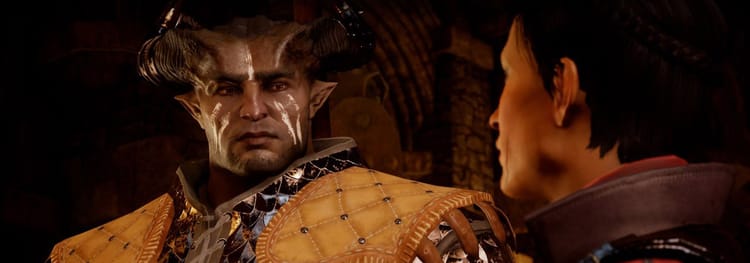The Thrill of Watching

A dialogue persists between the game and film communities, one that leaves traditionalist cinephiles shaking. Filmgoers are well accustomed to the passivity of cinema, so the realm of gaming, one that asks the consumer to engage as well, is provocative. But where do gaming and cinema collide? Can they be both at once? Outspoken on this has been Pan’s Labyrinth and Hellboy director Guillermo del Toro, who has insisted, “Movies are one of the peaks of human narrative. But I’m sorry to break it to the movie industry: So are videogames.”
Del Toro, a big-leaguer in the film world, is slowly becoming one in the gaming world as well. Not only has the director consistently come to the defense of videogames, but he is also developing his own gaming trilogy—a horror sandbox-style series called Insane due out in a few years (even through the production of his next feature film, Pacific Rim). This crossover of talent, from film to gaming, will have people discussing BioShock and Shadow of the Colossus—two games the director regards highly—as equal to a Hitchcock or Bergman film. As cultural artifacts, human-constructed narratives, videogames and films are one and the same for being able to suspend us, to make us feel a sense of thrill. This is not to beat a dead horse, but simply to say that people can be scared even by watching games.
As someone who has loved film, what is most curious to me is not whether videogames can hold their own against film and television, but whether they can be meaningful for the watcher. I have grown comfortable being subjected to movies, which inherently provide no choices. In the same way, I’m perfectly okay with watching my boyfriend as he operates the PlayStation 3 controller. It’s natural for us and fun and I get into it, and I’m sure other game-friendly couples do this too.
So when we brought home Catherine already well aware of the “cheating boyfriend” premise, we suspected nothing. Catherine tells the story of Vincent, who drunkenly finds himself in bed with a blonde pretty thing, Catherine, one morning instead of his serious long-term girlfriend, Katherine. But a funny thing happened to us—we found the game challenging our own relationship offscreen. In a confessional booth, a voice asks the player uncomfortable questions about love, lust, and morality, all striking the fundamental nerves of mature relationships. Imagine our stunned looks when asked, “Is it okay to lie if you’ll never get caught?” This was a truly scary moment, one occurring in real life.
“The artist is present” should apply for everyone, indiscriminately.
In my lifetime of playing videogames I had never managed to affect the outcome as a fan on the sidelines. I remembered playing through the cinematically oriented Heavy Rain, an hours-long lesson in the loss of agency as both player and viewer. Specifically, there is a scene where the main character loses his young son in a shopping mall and there is nothing you can do about it, despite the panic the game induces. But watching Vincent ponder these relationship questions, my mere act of watching mattered, and I fell victim to a game without playing it!
The sense in certain games—that anything is possible in a realm controlled by one individual—is often matched by an excess of things for the player to do. The Elder Scrolls V: Skyrim was wildly admired last year for its surplus of possibility: become a mage, go defeat countless dragons, even stuff as much crap as possible into a house. But the freedom to simply look is less emphasized, and something I took advantage of in sidekick mode.
I admired Catherine’s heavily stylized animation. And looking back, Superbrothers: Sword & Sworcery EP featured music I now have in an iTunes playlist, long after having finished the game. The takeaway is that games produce art that is relevant and entertaining outside of gameplay. We’ve reached a point where two-minute game trailers reveal that there’s excitement in watching and anticipating, too. The notion that the game audience has the capacity to value and be valued, particularly in a world where the player takes all, is a significant one. Consider that game reviews are always written from the active perspective. To game is to be a player; and by this logic viewership, one defined by the past century’s cinema as simply sitting and watching, is just a side effect. But gaming audiences are fundamentally different than the “oppressed” film audience in that those watching games are also watching the player.
I grew up encouraged to play, play anything, somehow understanding that I was preparing myself for entry into adulthood. I can still recall learning my ABCs via the Macintosh Classic of the early ’90s and a game on floppy disc. Yet the element of watching others and initially “being scared” always seemed part of the growth as well. I would not have learned my ABCs without being shown how to push the power button on my computer when I was three, just as I wouldn’t have jumped into later stages of Catherine without studying my boyfriend in the preliminary levels. Aren’t we all a little scared when we first embark on a new thing, making the transition from observer to doer? But at the end of the day, how would we learn to do if anticipation and observation did not come first?
The onlooker, whether a close friend, mother, dog, brother, sister, uncle, or weird voyeuristic random, has the unique chance to observe in the third person, watching a system in which game and player coexist symbiotically. The player is sewn into the fabric of action and reaction, unable to see himself in play, while the observer can. So, while my boyfriend guides Vincent through the daunting and seemingly infinite Nightmare stages, both of us wide-eyed and shrieking, I sit on the far side of the couch with the time and space to wonder whether his decisions reflect greater truths. It is a frightening experience to watch the player choose.
Yet the passive watcher is often thought of as a voyeur, one who threatens our privacy and is therefore the enemy. The average person would probably be pretty pissed off if suddenly accosted by a photographer or videographer: it is a violation of the space and privacy that we think we deserve. To lose that would be scary, or disconcerting at the least. Performance artist Marina Abramovi? forfeited her privacy in The Artist Is Present, a retrospective that lasted more than two months last year at the Museum of Modern Art here in New York. The exhibition culminated in a live performance that featured the artist sitting in a chair in a large exhibition hall, inviting museum-goers to sit with her. As a result, the performance area became a stage for two otherwise unassuming people. Abramovi? had turned viewers into participants, a process akin to gaming from the sidelines.
The longer the chair went unoccupied, the tenser I felt as a viewer, and the more strongly I felt compelled to approach. The empty chair signifies that the watcher plays a crucial role, without whom Abramovi?’s experience is incomplete. “The artist is present” should apply for everyone, indiscriminately.
At the end of the day, how would we learn to do if anticipation and observation did not come first?
Though there are countless fantasy and science fiction games, perhaps the most poignant for the viewer is the horror genre. The indie survival-horror game Amnesia: The Dark Descent was so terrifying for me to watch that I am afraid to Google its name. The game is simple: no characterization or guns or easy escapes, just darkness, isolation, and madness all while stuck in the mansion from hell. It is nearly an atmospheric test. Imagine a crumbling basement within a Victorian house, something looming deep inside; add the pure suspense found in the mazes in The Shining, and most importantly, a sound design that will shake you at your very core—then maybe you can picture it.
Some truly great player reactions are posted on YouTube, but Amnesia is also a serious task for those of us watching. The player doesn’t know what is behind a door or why that book fell on its own, and the viewer doesn’t either. The unknowability of a good horror narrative can be even more keenly sensed if we are denied initiative or mobility. Likewise, I notice that I often solve puzzle-oriented levels faster as a watcher rather than player, as I am alleviated from the pressure of manning a controller.
And games can engender a dialogue between player and watcher that is greater than the sum of player and system. Where other players of Catherine, male or female, may prevaricate when presented with “the tough questions,” my boyfriend and I turned to conversation about it instead. When we had completed the majority of the game, having endured what was a pretty rough quarter-life crisis for Vincent—what with cheating on his long-time girlfriend, harboring a drinking problem, thwarting mental illness, and wondering what happiness is, anyway—we were finally asked, “If ‘the truth’ causes you to be alone, would you still search for it?”
We sat there and thought for a moment, mechanically switching back and forth between a dangling Yes and No onscreen. This was all so strange: Do we answer for fun or on behalf of what we really think? Offscreen was the stranger, more dramatic scene: these were not only provocative questions, but ones we had not even asked on our own. When did I let a videogame, or any story really, start speaking for me? I guess I hadn’t expected a game to put me so personally and emotionally at risk.
What happened is quite stunning in retrospect. The game made us, both player and viewer, boyfriend and girlfriend, turn to each other and away from the screen. We stopped and discussed what would be best for Vincent and that, oh my god, of course truth is most important. We had stopped pushing buttons and I, the viewer and the girlfriend, had feelings and a say too.
Illustration by Sarah Jacoby



